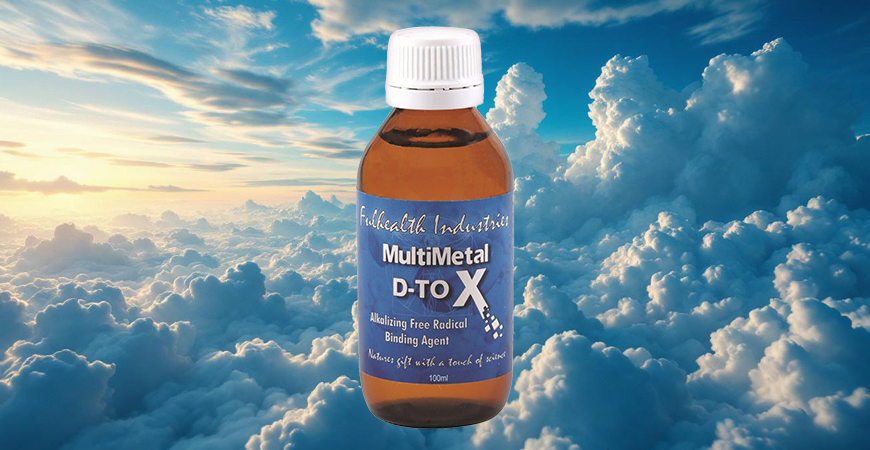The Sickness Industry Is Not in Recession… Why Not?
Heavy metal toxicity represents a constant health threat not through single large doses, but through constant incremental exposure.
Heavy metal toxicity has been implicated in everything from an increased risk of Alzheimer’s and cardiovascular disease to mental retardation, autism, Attention Deficit Disorder, viral and flu-like illnesses and even cancer.
Heavy metal toxicity can even be found even in unborn children.
A 2004 study by the Environmental Working Group identified 287 industrial chemicals in babies’ umbilical-cord blood, including 180 known to cause cancer and 217 that are toxic to the brain and nervous system.
The three most familiar heavy metals that are noted to be slowly but surely poisoning us are mercury, aluminum and lead.
Lead
With the elimination of lead-based house-paint, and the increased use of lead-free gasoline, lead poisoning is certainly less prevalent than it had been years ago.
However, low-level toxicity is still an issue. Coal-burning power plants still spew lead into the atmosphere.
The problem with lead is that it accumulates, unless you take active steps to remove it.
The EPA estimates that from 10 percent to 20 percent of human exposure to lead may come from drinking water.
Infants who consume mostly mixed formula can receive from 40 percent to 60 percent of their exposure to lead from drinking water.
The EPA warns that if lead is not detected early, children with high levels of lead in their bodies can suffer from damage to the brain and nervous system, behavior and learning problems (such as hyperactivity), slowed growth, headaches, and more.
Adults are also at risk and can suffer from reproductive problems (in both men and women), high blood pressure, digestive problems, nerve disorders, memory and concentration problems, and muscle and joint pain.
Mercury
Today, we face two primary sources of exposure to mercury – in our food supply and our dental fillings.
When the so-called “silver” fillings are put in the teeth, they are roughly 49-53% mercury. In other words, the filling is an amalgam that contains some silver, as well as what is for some people a lethal amount of mercury.
To determine the extent of possible mercury poisoning, studies were conducted on sheep.
The fillings were removed after six months and found to contain only about a fifth of the mercury that was present when the fillings were first put into the teeth.
The rest of the mercury had been leeched into the system and was found in significant concentrations in the brain and small intestines, though the liver and kidneys and lungs were also impacted by the mercury.
Amalgam fillings removal
When a patient has mercury amalgam fillings removed by a properly trained dentist, the patient is somewhat protected by a rubber dam that reduces the risk of swallowing the dental materials that are removed.
The problem is that mercury is so volatile that the vapor is absorbed by both patient and dentist, but dentists tend to suffer more than patients from this vapor.
However, the vapor can be so dangerous that sharing a sauna with someone with a mouth full of mercury can be toxic for everyone in the sauna.
People have known about the dangers of mercury since the days of the Roman Empire, when slaves who worked in the “quicksilver” mines died horribly after two or three years of exposure.
And in the 19th century, the workers who used mercury to make hats the “Mad Hatters” went bald and suffered from severe muscular tremors, dementia, and fits of wild, uncontrollable laughter.
It’s no secret that mercury is one of the most toxic metals known. Numerous studies have shown its impact on health. Strong evidence shows that mercury lowers T-cell counts.
This, alone, implicates it in cancer, autoimmune diseases, allergies, Candida overgrowth, and multiple sclerosis.
The EPA has determined that mercuric chloride and methyl mercury are possible human carcinogens.
It has also been shown that mercury cuts the oxygen carrying capacity of blood by half.
This would account for many instances of chronic fatigue and diminished respiratory function.
Mercury also has an affinity for brain tissue and is implicated in brain tumors and dementia.
And, finally, mercury has an affinity for fetal tissue, which accounts for its implication in birth defects.
Related video
For a quick visual demonstration, have a watch of this video that the International Academy of Oral Medicine and Toxicology so graciously shares with the world.
As you will see, the video below shows how mercury exposure can damages brain tissue:

Mercury is a naturally occurring toxin, which is found in soil, rocks, wood, and fuels like coal and oil.
The major source of mercury in our food chain, responsible for about one-third of the levels found in our bodies, is the burning of coal to generate electric power.
Mercury that naturally occurs in coal is released during burning.
It enters the air and is then precipitated into the oceans, lakes, and rivers.
When it reaches the water, microorganisms consume it and convert it into a substance called methyl mercury.
Methyl mercury accumulates in the muscle tissue of fish, animals, and humans.
According to the EPA, fish at the top of the aquatic food chain bioaccumulate methyl mercury to a level approximately 1 million to 10 million times greater than dissolved concentrations found in surrounding waters.
Of course, when you climb one more rung up that food chain, you find us, the people who eat fish.
Just like the predatory fish that we catch and eat, we store mercury in our tissues.
ALUMINUM
Once aluminum enters your body, it accumulates in your brain, where it kills off neurons, leading to memory loss.
And thanks to the significant amounts of aluminum found in food emulsifiers, antiperspirant deodorants, hair sprays, baking powder, many types of toothpaste, much of our drinking water, and most of our cookware, you may have been exposed to a lot of aluminum over the course of your life.
How many times have you used aluminum foil in the oven or wrapped the sandwiches in it?
Aluminum may be one of the prime factors in the onset of Alzheimer’s disease.
The connection between aluminum and Alzheimer’s disease became even stronger when, in 1995, Neurotoxicology reported that the widespread use of aluminum salts to purify water could account for the large numbers of people suffering from Alzheimer’s.
And recently, a connection between aluminum and fluoride was made.
New research has revealed that fluoride in drinking water makes the aluminum that we ingest more bio-available.
As was reported in Brain Research, Vol. 7 84:98, the combination of aluminum and fluoride causes the same pathological changes in brain tissue found in Alzheimer’s patients.
Note: Metallic aluminum is different from plant-derived aluminum (aluminum hydroxide). No studies have ever shown a connection between aluminum hydroxide and toxic levels of aluminum in the human body which is a good thing, because there is a lot of it in our food supply.
The bottom line is… Most chronic illnesses can be attributed in some way to environmental pollution.
YOU MUST PHYSICALLY TAKE ACTION TO CLEANSE HEAVY METALS FROM YOUR BODY.
THEY WILL NOT LEAVE ON THEIR OWN.



